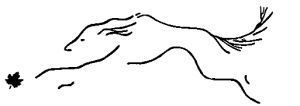About Salukis
breed information:
Salukis are intuitive and intelligent. They become very devoted to their humans and prefer the companionship of their family to being left outdoors or in a kennel. Despite their unpampered nomadic history, Salukis may be described as “sybaritic” – appreciating luxury and physical comfort. They enjoy very vigorous outdoor activities as well as lying quietly on a soft bed indoors. They are naturally clean and integrate easily into family life.
The Saluki is a sighthound that has been carefully bred for thousands of years to have a keenly developed hunting instinct. Populations of desert-bred Salukis used for hunting still exist in the Middle East. Its movement and outline are graceful, suggesting speed, endurance and strength. Its expression is dignified, aristrocratic and regal. Large oval, dark to hazel coloured eyes give the Saluki a far-seeing gentle expression.
Salukis can be found depicted in ancient artifacts and images around the world.
Breed Standard: Need Link
Origin and Purpose:
The Saluki is one of the oldest known breeds of dogs. It has existed, virtually unchanged, for many thousands of years. It was originally bred by the Arab tribesmen for bringing down game and was considered a sacred gift of God by the tribesmen. In Arabic, an ordinary dog is called kelb while the Saluki is El Hor, The Noble One.
General Appearance:
The whole appearance of this breed should give an impression of grace and symmetry and of great speed and endurance, coupled with strength and activity to enable it to kill gazelle or other quarry over deep sand or rocky mountains. The expression should be dignified and gentle, with deep, faithful, far-seeing eyes.
Size:
Dogs should average in height from 23-28 inches (58-71 cm), and bitches may be considerably smaller, this being very typical of the breed.
Coat:
Smooth and of a soft silky texture, slight feather on the legs, feather at the back of the thighs and sometimes with slight woolly feather on the thigh and shoulder.
Colour:
White, cream, fawn, golden, red, grizzle and tan tricolour (white, black and tan), black and tan, or any of the aforementioned colours and white.
Head:
Long and narrow. Skull moderately wide between the ears, not domed, stop not pronounced, the whole showing great quality. Nose: black or liver. Teeth strong and level; eyes dark to hazel and bright large and oval, but not prominent; ears long and covered with long silky hair,hanging close to the skull and mobile.
Neck:
Long, supple, and well muscled.
Forequarters:
Shoulders sloping and set well back, well muscled without being coarse. Forelegs straight and long from the elbow to the knee.
Loin and Back:
Back fairly broad, muscles slightly arched over loin. Chest deep and moderately narrow
Hindquarters:
Strong, hip bones set well apart and stifle moderately bent, hocks low to the ground, showing galloping and jumping power.
Feet:
Of moderate length, toes long and well arched, not splayed out but at the same time not cat- footed; the whole being strong and supple and well feathered between the toes.
Tail:
Long, set on low and carried naturally in a curve, well feathered on the underside with long, silky hair, not bushy.
Smooth Variety:
In this variety, the points should be the same with the exception of the coat which has no feathering.
July 1994
Canadian Kennel Club Official Breed Standard


